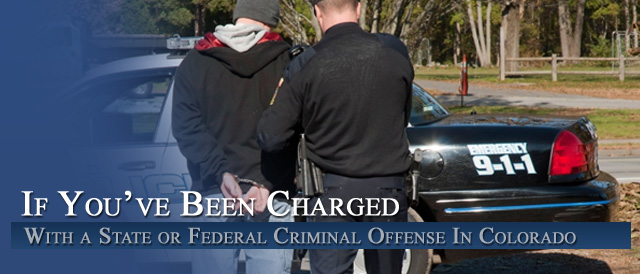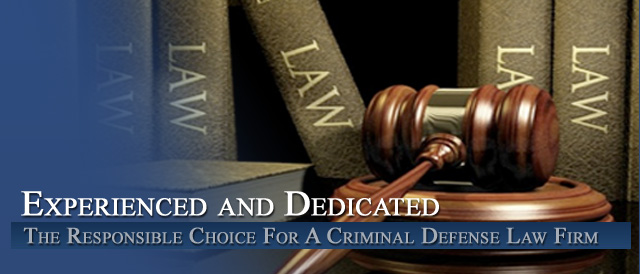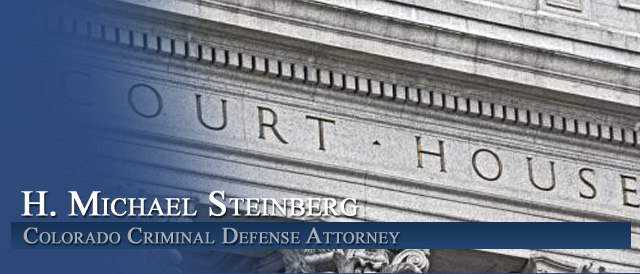




SENTENCING IN COLORADO: MORE DETAIL
This chapter provides an overview of sentencing law since 1979 in Colorado, and outlines what sentencing laws require of judges. The sentencing of offenders is at the discretion of the judge after conviction. Colorado’s sentencing laws are complicated and have varying levels of application for various types of offenders.
This chapter will focus on the variables which affect the sentence handed down by a judge. Once an offender has entered prison, this sentence may subsequently be reduced by earned time. However, earned time is applied post-sentence only for the purpose of determining a parole eligibility date. Further, earned time does not change or reduce the sentence handed down by the sentencing court, it reduces the time served in prison. Earned time will be discussed in the chapter on parole.
This chapter highlights the following:
- Sentencing Ranges
- Special Sentencing Categories
- Habitual Offender Sentences
SENTENCING RANGES
Since the mid- to late-1970s, Colorado’s sentencing laws have changed frequently and dramatically. The sentencing scheme underwent the most drastic changes in 1979 and then again in 1985. These changes are considered the most drastic because they appear to have had the greatest impact on the prison population. Other important changes to the sentencing scheme occurred in 1989 and 1993.
Table 3.1 is a side-by-side comparison of the various sentencing schemes from 1979 through current law.
Table 3.1: Felony Class Presumptive Ranges
| Felony Class | Pre-1979 | 1979 | 1985 | 1989 | 1993 (current law in 1998) | |
| 1 | Minimum | Life | Life | Life | Life | Life |
| Maximum | Death | Death | Death | Death | Death | |
| 2 | Minimum | 10 years | 8 years | 8 years | 8 years | 8 years |
| Maximum | 50 years | 12 years | 24 years | 24 years | 24 years | |
| 3 | Minimum | 5 years | 4 years | 4 years | 4 years | 4 years |
| Maximum | 40 years | 8 years | 16 years | 16 years | 12 years | |
| 4 | Minimum | 1 day | 2 years | 2 years | 2 years | 2 years |
| Maximum | 10 years | 4 years | 8 years | 8 years | 6 years | |
| 5 | Minimum | 1 day | 1 year | 1 year | 1 year | 1 year |
| Maximum | 5 years | 2 years | 4 years | 4 years | 3 years | |
| 6 | Minimum | NA | NA | NA | 1 year | 1 year |
| Maximum | NA | NA | NA | 2 years | 18 months | |
The following sections summarize Colorado’s sentencing law prior to 1979, and major changes to sentencing laws in 1979, 1985, 1989, and 1993.
Sentencing prior to July 1, 1979. Convicted offenders sentenced for a crime committed prior to July 1, 1979 were sentenced under an “indeterminate” sentencing scheme. Indeterminate sentences provided for broad sentencing ranges. Under indeterminate sentencing, judges had discretion in sentencing an offender within a range set forth in law, depending on that offender’s criminal history and the circumstances of the particular crime for which the offender was convicted. This judicial discretion resulted in widely divergent sentences handed down to offenders convicted of similar crimes.
House Bill 79-1589. In 1979, the General Assembly went to a presumptive or “determinate” sentencing scheme by adopting H.B. 79-1589 (Representative Gorsuch). Under this determinate sentencing schedule, presumptive ranges for each felony class were more narrowly defined. The new determinate sentencing ranges under H.B. 79-1589 resulted in less divergent sentences handed down for similar offenses. More narrowly defined presumptive ranges also resulted in longer minimum sentences and shorter maximum sentences.
House Bill 85-1320. In 1985, because of nationwide attention to crime, and because of a perception that shorter sentences under Colorado’s relatively new determinate sentencing scheme were to blame for an increase in crime in Colorado, the General Assembly adopted H.B. 85-1320 (Representative Mielke). Under H.B. 85-1320, the maximum sentence in the presumptive range was doubled for all felony classes. This doubling of the maximum sentence was the first step towards restoring broad sentencing ranges — indeterminate sentencing — in Colorado.
Senate Bill 89-246. Doubling the maximum sentence in the presumptive range for all felony classes resulted in increased prison populations and prison overcrowding. One strategy the General Assembly agreed upon to deal with this problem was to adopt S.B. 89-246 (Senator Wells) which added a new felony class, the class 6 felony. The addition of the new class 6 felony, with shorter sentences in the presumptive range, was intended to result in shorter prison sentences which would, in turn, alleviate prison overcrowding. In order to accommodate the new class 6 felony, some class 4 felonies were reduced to class 5 felonies and in turn, some class 5 felonies became class 6 felonies.
House Bill 93-1302. The most recent major change to the sentencing structure in Colorado was in 1993. Continually increasing prison populations resulted in unprecedented growth in prison construction. In an effort to deal with both the prison population and the prison construction issues, the General Assembly adopted H.B. 93-1302 (Representative Tucker). House Bill 93-1302 reduced by 25 percent the maximum sentence in the presumptive range for class 3, 4, 5, and 6 felonies. House Bill 93-1302 also created a special sentencing category of crimes presenting an extraordinary risk of harm to society. The maximum sentence in the presumptive range for class 3 through 6 felonies was not reduced for these crimes which are discussed later in this chapter.
SPECIAL SENTENCING CATEGORIES
The presumptive ranges specified in the previous section are the base from which judges calculate sentences. However, since 1979, the General Assembly has adopted several special sentencing categories which require longer sentences for offenders convicted of certain more serious crimes. Sentences in these special sentencing categories are intended to provide for longer sentences outside of the presumptive range, for particularly violent or heinous crimes. Sentences in these special sentencing categories have the effect of bringing sentencing in Colorado full circle from indeterminate sentencing to determinate sentencing and back to indeterminate sentencing again. There are five special sentencing categories as follows:
- crimes with extraordinary mitigating or aggravating circumstances;
- crimes of violence;
- crimes with extraordinary aggravating circumstances;
- crimes with sentence-enhancing circumstances; and
- crimes presenting an extraordinary risk of harm to society.
Table 3.2 is a history of sentencing ranges for special sentencing categories. This table illustrates the year each special sentencing category was adopted by the General Assembly. This table also illustrates how the presumptive sentencing ranges have changed over the years.
Table 3.2: History of Sentencing Ranges for Special Sentencing Categories
| Class 2Felony | Class 3Felony | Class 4Felony | Class 5Felony | Class 6Felony | ||
| 1979 Normal Presumptive Ranges | 8 to 12 years | 4 to 8 years | 2 to 4 years | 1 to 2 years | NA | |
| Extraordinary Mitigating or Aggravating Circumstances | 4 to 24 years | 2 to 16 years | 1 to 8 years | 6 months to4 years | NA | |
| Crime of Violence | 8-year min. for violent crimes | 4-year min. for violent crimes | 2-year min. for violent crimes | 1-year min. for violent crimes | NA | |
| 1981 Normal Presumptive Ranges | 8 to 12 years | 4 to 8 years | 2 to 4 years | 1 to 2 years | NA | |
| Extraordinary Mitigating or Aggravating Circumstances | 4 to 24 years | 2 to 16 years | 1 to 8 years | 6 months to4 years | NA | |
| Extraordinary Aggravating Circumstances/Crime of Violence | 12 to 24 years | 8 to 16 years | 4 to 8 years | 2 to 4 years | NA | |
| 1985 Normal Presumptive Ranges | 8 to 24 years | 4 to 16 years | 2 to 8 years | 1 to 4 years | NA | |
| Extraordinary Mitigating or Aggravating Circumstances | 4 to 48 years | 2 to 32 years | 1 to 16 years | 6 months to8 years | NA | |
| Extraordinary Aggravating Circumstances/Crime of Violence | 24 to 48 years | 16 to 32 years | 8 to 16 years | 4 to 8 years | NA | |
| 1988 Normal Presumptive Ranges | 8 to 24 years | 4 to 16 years | 2 to 8 years | 1 to 4 years | NA | |
| Extraordinary Mitigating or Aggravating Circumstances | 4 to 48 years | 2 to 32 years | 1 to 16 years | 6 months to8 years | NA | |
| Extraordinary Aggravating Circumstances/Crime of Violence | 16 to 48 years | 10 to 32 years | 5 to 16 years | 2.5 to 8 years | NA | |
| 1989 Normal Presumptive Ranges | 8 to 24 years | 4 to 16 years | 2 to 8 years | 1 to 4 years | 1 to 2 years | |
| Extraordinary Mitigating or Aggravating Circumstances | 4 to 48 years | 2 to 32 years | 1 to 16 years | 6 months to 8 years | 6 months to 4 years | |
| Extraordinary Aggravating Circumstances/Crime of Violence | 16 to 48 years | 10 to 32 years | 5 to 16 years | 2.5 to 8 years | 18 months to 4 years | |
| 1990 Normal Presumptive Ranges | 8 to 24 years | 4 to 16 years | 2 to 8 years | 1 to 4 years | 1 to 2 years | |
| Extraordinary Mitigating or Aggravating Circumstances | 4 to 48 years | 2 to 32 years | 1 to 16 years | 6 months to8 years | 6 months to 4 years | |
| Extraordinary Aggravating Circumstances/Crime of Violence | 16 to 48 years | 10 to 32 years | 5 to 16 years | 2.5 to 8 years | 18 months to 4 years | |
| Sentence-Enhancing Circumstances | 8 to 48 years | 4 to 32 years | 2 to 16 years | 1 to 8 years | 1 to 4 years | |
| 1993 Normal Presumptive Ranges(current law in 1998) | 8 to 24 years | 4 to 12 years | 2 to 6 years | 1 to 3 years | 1 year to 18 months | |
| Extraordinary Mitigating or Aggravating Circumstances | 4 to 48 years | 2 to 24 years | 1 to 12 years | 6 months to 6 years | 6 months to 3 years | |
| Extraordinary Aggravating Circumstances/Crime of Violence | 16 to 48 years | 8 to 24 years | 4 to 12 years | 2 to 6 years | 15 months to 3 years | |
| Sentence-Enhancing Circumstances | 8 to 48 years | 4 to 24 years | 2 to 12 years | 1 to 6 years | 1 to 3 years | |
| Extraordinary Risk of Harm to Society | NA | 4 to 16 years | 2 to 8 years | 1 to 4 years | 1 to 2 years | |
Extraordinary Mitigating or Aggravating Circumstances
The court may impose a sentence that is lesser or greater than those in the presumptive range when the court finds that extraordinary mitigating or aggravating circumstances are present. Aggravating or mitigating factors may be determined by the court based on evidence in the record at the sentencing hearing and information contained in the presentence investigation report. The court may not impose a sentence which is less than one-half of the minimum sentence in the presumptive range, and not more than twice the maximum in the presumptive range. After applying extraordinary mitigating or aggravating circumstances to a sentence, the ranges are as follows:
- class 6 felony – six months to three years;
- class 5 felony – six months to six years;
- class 4 felony – one year to 12 years;
- class 3 felony – two years to 24 years;
- class 2 felony – four years to 48 years;
- class 1 felony – life to death.
Crimes of Violence (Section 16-11-309, C.R.S.)
Any offender convicted of a crime of violence is required to be sentenced to a prison term which is at least at the midpoint in the presumptive range but not more than twice the maximum term. The following offenses which are committed, conspired to be committed, or attempted to be committed are specified in statute as crimes of violence (these crimes of violence are also included under the following special sentencing categories: crimes with extraordinary aggravating circumstances and crimes presenting an extraordinary risk of harm to society):
- a crime in which the defendant used, or possessed and threatened the use of, a deadly weapon;
- a crime resulting in serious bodily injury or death;
- a crime against an at-risk adult or at-risk juvenile;
- murder;
- first or second degree assault;
- kidnapping;
- sexual assault;
- aggravated robbery;
- first degree arson;
- first or second degree burglary;
- escape;
- criminal extortion; or
- any unlawful sexual offense in which the defendant caused bodily injury to the victim or in which the defendant used threat, intimidation, or force against the victim.
If an offender is convicted of a crime of violence, the sentencing ranges are as follows:
- class 6 felony – 15 months to three years;
- class 5 felony – two years to six years;
- class 4 felony – four years to 12 years;
- class 3 felony – eight years to 24 years;
- class 2 felony – 16 years to 48 years;
- class 1 felony – life to death.
Extraordinary Aggravating Circumstances
An offender convicted of a crime with extraordinary aggravating circumstances is required to be sentenced to a term of at least the midpoint in the presumptive range but not more than twice the maximum term. Offenders committing offenses under the following scenarios are charged with a crime which has extraordinary aggravating circumstances:
- the defendant is convicted of a Section 16-11-309, C.R.S., crime of violence (see page 32 for a listing of these crimes)
- the defendant was on parole for another felony at the time he or she committed the felony offense;
- the defendant was on probation or was on bond while awaiting sentencing following revocation of probation for another felony when he or she committed the felony offense;
- the defendant was under confinement, in prison, or in any correctional institution as a convicted felon, or an escapee from any correctional institution for another felony when he or she committed the felony offense;
- the defendant was on appeal bond when he or she committed the felony offense following a conviction for a previous felony; or
- the defendant is less than 18 years of age and, at the time he or she committed the offense, was on probation for or on bond while awaiting sentencing following revocation of probation for another offense that would have been a felony if committed by an adult.
If an offender is convicted of a crime with extraordinary aggravating circumstances, the sentencing ranges are as follows:
- class 6 felony – 15 months to three years;
- class 5 felony – two years to six years;
- class 4 felony – four years to 12 years;
- class 3 felony – eight years to 24 years;
- class 2 felony – 16 years to 48 years;
- class 1 felony – life to death.
Sentence-Enhancing Circumstances
Offenders convicted of a crime with sentence-enhancing circumstances are required to serve a sentence which is at least the minimum in the presumptive range but not more than twice the maximum in the presumptive range. Following are sentence-enhancing circumstances:
- the defendant was charged with or was on bond for a previous felony when he or she committed the felony and the defendant was subsequently convicted of the felony;
- when the defendant committed the felony, he or she was on bond for having pled guilty to a lesser offense when the original offense charged was a felony;
- the defendant was under a deferred judgement and sentence for another felony when he or she committed the felony;
- the defendant is less than 18 years of age and, at the time he or she committed the felony, was on bond for having pled guilty to a lesser offense when the original offense charged was an offense that would have constituted a felony if committed by an adult;
- the defendant is less than 18 years of age and, when he or she committed the felony, was under a deferred judgement and sentence for another offense that would have constituted a felony if committed by an adult; or
- when the defendant committed the felony, he or she was on parole for having been adjudicated a delinquent child for an offense which would constitute a felony if committed by an adult.
Sentence ranges for offenders convicted of crimes with sentence-enhancing circumstances are as follows:
- class 6 felony – one year to three years;
- class 5 felony – one year to six years;
- class 4 felony – two years to 12 years;
- class 3 felony – four years to 24 years;
- class 2 felony – eight years to 48 years;
- class 1 felony – life to death.
Crimes Presenting an Extraordinary Risk of Harm to Society
Sentences for offenders convicted of crimes presenting an extraordinary risk of harm to society are increased as follows (only class 3 through 6 felonies are increased since none of the crimes presenting an extraordinary risk of harm to society are class 1 or 2 felonies):
- the maximum sentence in the presumptive range is increased by four years for class 3 felonies;
- the maximum sentence in the presumptive range is increased by two years for class 4 felonies;
- the maximum sentence in the presumptive range is increased by one year for class 5 felonies; and
- the maximum sentence in the presumptive range is increased by six months for class 6 felonies.
Crimes which present an extraordinary risk of harm to society include the following:
- first, second, and third degree sexual assault;
- sexual assault on a child and sexual assault on a child by one in a position of trust;
- sexual assault on a client by a psychotherapist;
- incest and aggravated incest;
- aggravated robbery;
- child abuse;
- unlawful distribution, manufacturing, dispensing, sale, or possession of a controlled substance with the intent to sell, distribute, manufacture, or dispense; and
- any Section 16-11-309, C.R.S., crime of violence (see page 32 for a listing of these crimes)
Presumptive sentence ranges for crimes presenting an extraordinary risk of harm to society are as follows:
- class 6 felony – one year to two years;
- class 5 felony – one year to four years;
- class 4 felony – two years to eight years;
- class 3 felony – four years to 16 years;
- class 2 felony – eight years to 24 years;
- class 1 felony – life to death.
HABITUAL OFFENDER STATUTES
Sentencing for habitual offenders bypasses the presumptive sentencing ranges and requires judges to sentence habitual offenders to a determinate sentence which is significantly higher than the maximum in the felony class presumptive ranges.
Since 1979, the habitual offender statute has evolved from two levels of habitual offenders — the “little habitual” and the “big habitual” — to four levels of habitual offenders today: the “little habitual”; the “big habitual”; the “bigger habitual”; and the “three strikes you’re out” habitual.
Table 3.3 summarizes the major changes in the habitual offender statutes since 1979. The habitual offender statutes have not been amended since 1994.
Table 3.3: Habitual Offender Sentencing Ranges
| Class 1 Felony | Class 2 Felony | Class 3Felony | Class 4 Felony | Class 5 Felony | Class 6 Felony | ||
| 1979 Normal Presumptive Ranges | Life to Death | 8 to 12 years | 4 to 8 years | 2 to 4 years | 1 to 2 years | NA | |
| Little Habitual (3rd conviction) | 25 to 50years | 25 to 50years | 25 to 50years | NA | NA | NA | |
| Big Habitual (4th conviction) | Life | Life | Life | Life | Life | NA | |
| 1985 Normal Presumptive Ranges | Life to Death | 8 to 24 years | 4 to 16 years | 2 to 8 years | 1 to 4 years | NA | |
| Little Habitual (3rd conviction) | 25 to 50years | 25 to 50years | 25 to 50years | 25 to 50years | NA | NA | |
| Big Habitual (4th conviction) | Life | Life | Life | Life | Life | NA | |
| 1993 Normal Presumptive Ranges | Life to Death | 8 to 24 years | 4 to 12 years | 2 to 6 years | 1 to 7 years | 1 year to 18 months | |
| Little Habitual (3rd conviction) | Life | 72 years | 36 years | 18 years | 9 years | NA | |
| Big Habitual (4th conviction) | Life | 96 years | 48 years | 24 years | 12 years | 6 years | |
| Bigger Habitual (5th conviction) | Life | Life | Life | Life | Life | Life | |
| 1994 Normal Presumptive Ranges (current law in 1998) | Life to Death | 8 to 24 years | 4 to 12 years | 2 to 6 years | 1 to 3 years | 1 year to18 months | |
| Little Habitual (3rd conviction) | Life | 72 years | 36 years | 18 years | 9 years | NA | |
| Big Habitual (4th conviction) | Life | 96 years | 48 years | 24 years | 12 years | 6 years | |
| Bigger Habitual (5th conviction) | Life | Life | Life | Life | Life | Life | |
| “Three Strikes You’re Out” Habitual (3rd conviction of class 1, 2, or 3/violent felonies) | Life | Life | Life (only class 3 felonies which are crimes of violence) | NA | NA | NA | |
NA: Not Applicable.
Following is a brief explanation of when and how each of these habitual sentences applies.
The “little habitual.”
Offenders convicted of a class 1, 2, 3, 4, or 5 felony who, within ten years of the date of the commission of the offense, have twice previously been convicted of a felony in Colorado or any other state or in federal court are adjudicated habitual offenders under the little habitual statute. The sentencing court is required to sentence such offenders to a term of imprisonment which is three times the maximum of the presumptive range for the felony class for which the person is convicted. As a matter of policy, the General Assembly chose not to apply the little habitual to class 6 felonies.
Sentencing under the little habitual statute is as follows:
- class 5 felony – nine years;
- class 4 felony – 18 years;
- class 3 felony – 36 years;
- class 2 felony – 72 years;
- class 1 felony – life imprisonment.
The “big habitual.”
Offenders convicted of a fourth felony, regardless of the felony class, in Colorado or any other state of in federal court are adjudicated habitual offenders under the big habitual statute. The sentencing court is required to sentence such offenders to a term of imprisonment which is four times the maximum in the presumptive range for the class of felony for which the person is convicted.
Sentencing under the big habitual statute is as follows:
- class 6 felony – six years;
- class 5 felony – 12 years;
- class 4 felony – 24 years;
- class 3 felony – 48 years;
- class 2 felony – 96 years;
- class 1 felony – life imprisonment.
The “bigger habitual.”
Any offender convicted and sentenced under the big habitual statute, who is subsequently convicted of a felony which is a crime of violence as defined by Section 16-11-309, C.R.S., is adjudicated an habitual offender under the bigger habitual statute. Offenders convicted of the bigger habitual are to be sentenced to a term of life imprisonment. Offenders sentenced to life imprisonment under this provision are ineligible for parole until serving at least 40 calendar years.
The “three strikes you’re out” habitual.
The newest level of habitual offender applies to offenders convicted of a third class 1, 2, or 3 felony which is a crime of violence as defined in Section 16-11-309, C.R.S. Such offenders are to be adjudicated an habitual offender and are to be sentenced to a term of life imprisonment. Offenders sentenced under the three strikes provisions are ineligible for parole until serving at least 40 calendar years.
Other Articles of Interest:
- Colorado Crim. Process Flow Chart
- Colorado Criminal Sentencing Laws
- How You Can Help Your Colorado Criminal Defense Lawyer Defend Your Case
- Colorado Criminal Law: Alternative Sentencing for Dual Diagnosis Defendants – The Circle Program
- Pre-Sentence Investigations












